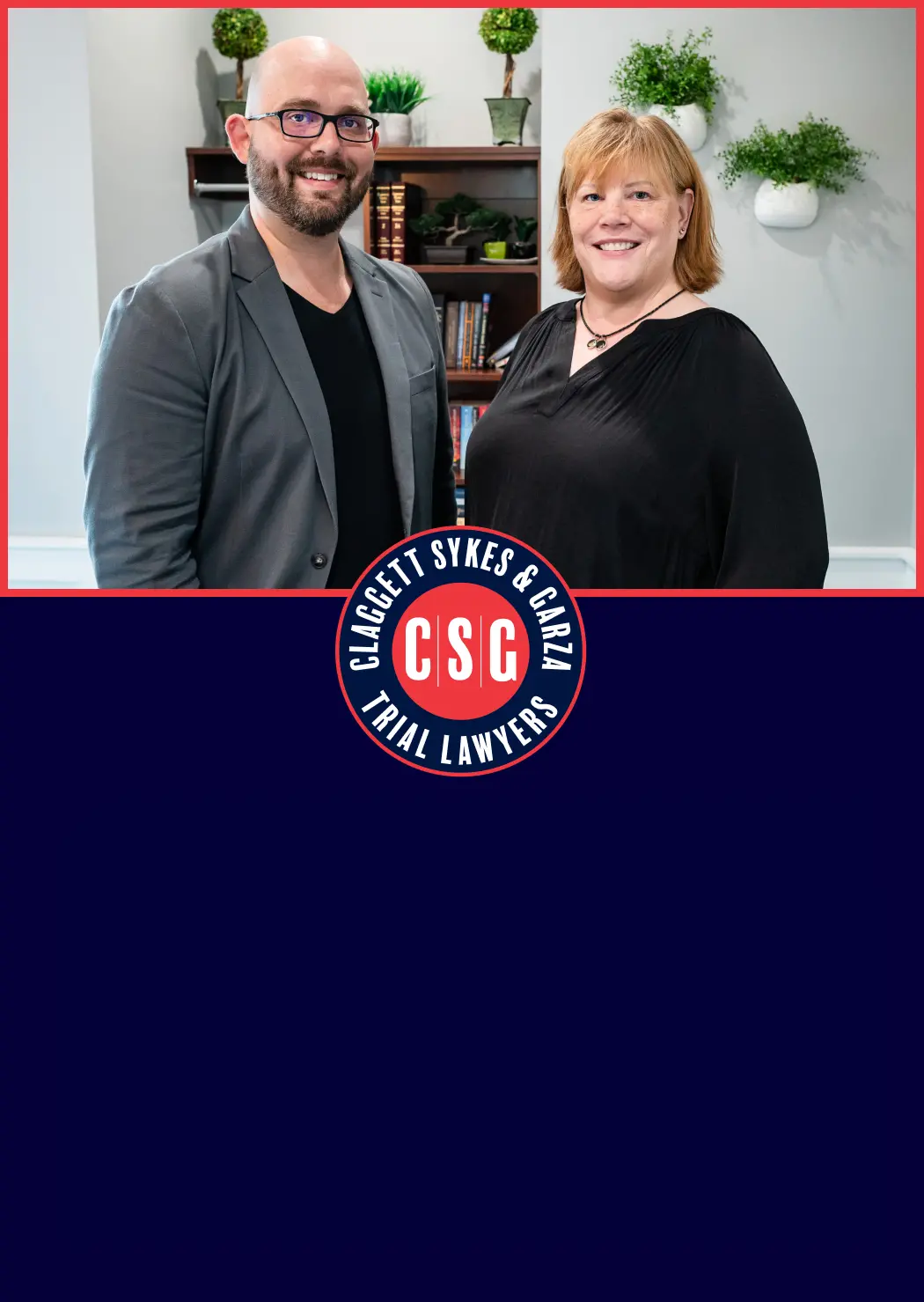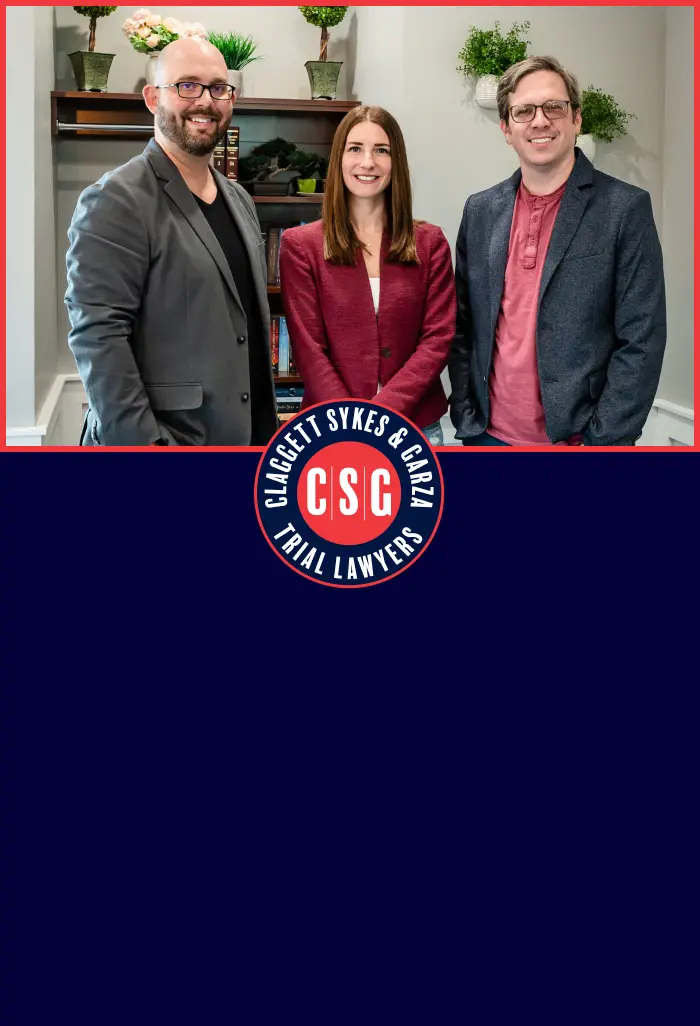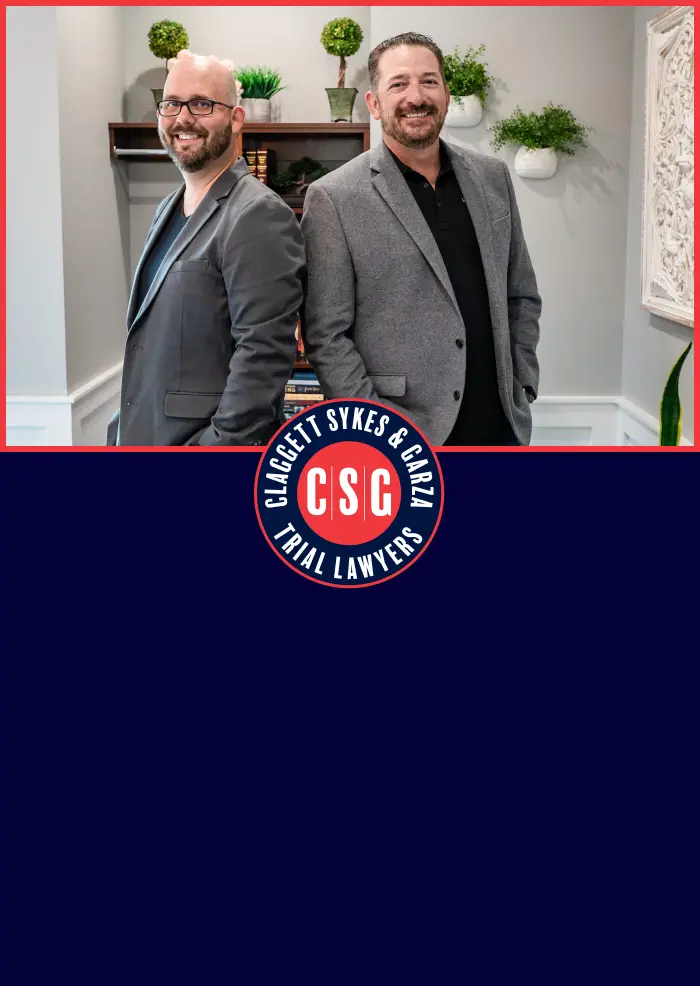When anesthesia errors occur, the results can be life-altering, causing brain damage, disability, or even death. Our Connecticut anesthesia errors lawyers have secured record verdicts, including the most significant bodily injury award in state history, and work with top medical experts to fight for maximum compensation. Contact Claggett, Sykes & Garza Trial Lawyers today for a free consultation to discuss your anesthesia malpractice claim.
Understanding Anesthesia Errors in Connecticut
Anesthesia plays a critical role in modern medicine, allowing patients to undergo surgical procedures without pain or consciousness. However, when anesthesia administration goes wrong, the results can be catastrophic. Connecticut hospitals and surgical centers perform numerous procedures requiring anesthesia each year, and while most are successful, anesthesia errors continue to occur.
Types of Anesthesia and Associated Risks
Medical professionals use four primary types of anesthesia, each carrying distinct risks when administered improperly:
General Anesthesia renders patients completely unconscious and requires careful monitoring of vital signs, breathing, heart rate, blood pressure, oxygenation levels, and other critical functions according to American Society of Anesthesiologists standards. Errors in general anesthesia can lead to oxygen deprivation, cardiac arrest, or anesthesia awareness, where patients regain consciousness during surgery but cannot move or speak.
Regional Anesthesia blocks sensation in specific body regions, including both neuroaxial blocks (such as epidurals during birth injury cases or spinal blocks for lower body surgeries) and peripheral nerve blocks. Improper needle placement or incorrect dosing can cause nerve damage, paralysis, or infection.
Local Anesthesia numbs small areas for minor procedures. While generally safer, allergic reactions or overdoses can still cause serious complications, including seizures or cardiac problems.
Monitored Anesthetic Care (MAC), also known as monitored sedation, involves conscious sedation with varying levels of depth (minimal, moderate, or deep sedation). This type allows patients to maintain some level of consciousness while providing comfort and pain relief during procedures.
Common Anesthesia Mistakes That Lead to Injury
Connecticut anesthesia errors typically fall into several categories. Dosage errors, where anesthesiologists administer too much or too little medication, represent one of the most dangerous mistakes. Overdoses can cause respiratory depression, cardiac arrest, or death, while underdoses may result in anesthesia awareness or inadequate pain control.
Intubation errors occur when anesthesiologists improperly insert breathing tubes, potentially causing esophageal intubation, dental damage, or airway trauma. Failure to monitor patients adequately during procedures can lead to undetected oxygen deprivation, blood pressure changes, or cardiac irregularities.
Equipment malfunctions or failures to check anesthesia machines properly can result in the delivery of incorrect gas mixtures or mechanical failures during critical moments. Pre-operative assessment failures, where anesthesiologists fail to review patients’ medical histories, allergies, or current medications, can lead to dangerous drug interactions or allergic reactions.

Get the Compensation You Deserve. Our Experienced Lawyers Can Help.
When Anesthesia Errors Constitute Medical Malpractice
Not every adverse outcome during anesthesia constitutes medical malpractice. Connecticut law requires specific elements to establish a valid medical malpractice claim against healthcare providers.
Proving Negligence in Anesthesia Cases
To succeed in an anesthesia malpractice case, plaintiffs must prove four essential elements. First, the anesthesiologist owed a duty of care to the patient, which exists whenever a doctor-patient relationship forms. Second, the anesthesiologist breached that duty by failing to meet the accepted standard of care that a reasonably competent anesthesiologist would provide under similar circumstances.
Third, the breach of duty directly caused the patient’s injury. This causation element often requires extensive medical expert testimony to establish the connection between the anesthesia error and the resulting harm. Finally, the patient must have suffered actual damages, including medical expenses, lost wages, pain and suffering, or other quantifiable losses.
Medical expert testimony plays a crucial role in anesthesia malpractice cases. Qualified anesthesiologists must testify about the appropriate standard of care and explain how the defendant’s actions fell below that standard. These experts also help establish causation by explaining how the anesthesia error led to the patient’s injuries.
Connecticut Medical Malpractice Laws
Connecticut has specific laws governing medical malpractice claims that affect anesthesia error cases. The state requires a certificate of good faith from a qualified medical expert before filing a malpractice lawsuit, confirming that the claim has merit and reasonable grounds exist to believe malpractice occurred, as outlined by the Connecticut Department of Public Health reporting requirements.
Connecticut follows a modified comparative negligence rule, meaning patients can recover damages even if they bear some responsibility for their injuries, as long as their fault does not exceed the statutory threshold. However, their recovery will be reduced by their percentage of fault.
The state also has specific requirements for medical malpractice claims. Patients must generally file their lawsuit within two years of discovering or reasonably should have discovered the potential malpractice, though exceptions exist for cases involving foreign objects left in the body or fraudulent concealment. Additionally, there is a three-year statute of repose that creates an absolute deadline regardless of discovery.
Serious Injuries Caused by Anesthesia Errors
Anesthesia errors can result in some of the most severe and life-altering injuries in medical malpractice. Understanding these potential consequences helps patients and families recognize when anesthesia negligence may have occurred.
Brain Damage and Oxygen Deprivation
Oxygen deprivation represents one of the most serious risks of anesthesia errors. When patients do not receive adequate oxygen during procedures, brain cells begin dying after approximately 4 minutes of complete oxygen deprivation. Anoxic brain injury occurs when the brain receives no oxygen, while hypoxic brain injury results from reduced oxygen levels.
These injuries can cause permanent cognitive impairment, memory loss, personality changes, and physical disabilities. Patients may require lifelong care, including physical therapy, occupational therapy, and assistance with daily activities. The financial impact of these injuries often reaches millions of dollars over a patient’s lifetime, making them catastrophic injuries requiring specialized legal representation.
Anesthesia awareness, though less physically damaging, can cause severe psychological trauma. Patients who regain consciousness during surgery but cannot move or communicate often develop post-traumatic stress disorder, anxiety, and depression, requiring extensive psychological treatment.
Wrongful Death from Anesthesia Complications
Tragically, anesthesia errors can prove fatal. Respiratory depression from anesthesia overdoses can cause patients to stop breathing, leading to cardiac arrest and death. Allergic reactions to anesthesia medications can cause anaphylactic shock, resulting in cardiovascular collapse and death if not immediately treated.
Aspiration during anesthesia, where patients inhale stomach contents into their lungs, can cause severe pneumonia and respiratory failure. Equipment failures or gas delivery errors can also prove fatal if not quickly identified and corrected.
When anesthesia errors cause wrongful death, surviving family members may pursue compensation for their loved one’s pain and suffering before death, medical expenses, funeral costs, and the economic value of the deceased’s future earnings and services.

Let Us Fight for Your Rights and Maximize Your Compensation.
How Our Connecticut Anesthesia Error Attorneys Can Help
At Claggett, Sykes & Garza Trial Lawyers, our Connecticut medical malpractice attorneys bring decades of experience handling complex medical malpractice cases. Our team understands the intricate medical and legal issues involved in anesthesia negligence claims and has the resources necessary to take on major hospitals and insurance companies.
Investigating Your Anesthesia Malpractice Claim
Our investigation process begins immediately upon retaining our services. We obtain and thoroughly review all medical records related to your procedure, including pre-operative assessments, anesthesia records, surgical notes, and post-operative care documentation. Our experienced trial attorneys work with medical experts to identify deviations from the standard of care and determine whether anesthesia errors caused your injuries.
We also investigate the anesthesiologist’s background, including their training, board certifications, and any history of malpractice claims or disciplinary actions. Hospital policies and procedures are examined to determine whether institutional negligence contributed to the error.
Our team preserves critical evidence, including anesthesia equipment, medication records, and witness statements from operating room personnel. Time is crucial in these cases, as hospitals may alter or destroy records, and witnesses’ memories fade over time.
Working with Medical Experts
Successful anesthesia malpractice cases require testimony from qualified medical experts who can explain complex medical concepts to judges and juries. Our firm maintains relationships with leading anesthesiologists, critical care physicians, and other medical professionals who serve as expert witnesses in our cases.
These experts review medical records, analyze the care provided, and provide opinions about whether the anesthesiologist’s actions met the appropriate standard of care established by organizations like the Joint Commission. They also help establish causation by explaining how the anesthesia error led to the patient’s injuries and calculate the extent of damages, including future medical care needs and lost earning capacity.
Our medical experts have impressive credentials and extensive experience testifying in court. Their testimony often proves decisive in achieving favorable outcomes for our clients.

Experienced Personal Injury Lawyers Ready to Assist You.
Compensation for Anesthesia Error Victims
Victims of anesthesia errors may be entitled to significant compensation for their injuries and losses. Understanding the types of damages available helps patients and families make informed decisions about pursuing legal action.
Types of Damages Available
Economic damages compensate for quantifiable financial losses resulting from anesthesia errors. Medical expenses include all costs related to treating the injury, from emergency care immediately following the error through ongoing rehabilitation and future medical needs. Lost wages cover income lost due to the inability to work, while loss of earning capacity addresses reduced future earning potential due to permanent disabilities.
Non-economic damages compensate for intangible losses that cannot be easily quantified. Pain and suffering damages address the physical pain and emotional distress caused by the anesthesia error and resulting injuries. Loss of enjoyment of life compensates for the inability to participate in activities and hobbies previously enjoyed.
In cases involving permanent disabilities, damages may include the cost of home modifications, assistive devices, and long-term care services. Spouses may also recover damages for loss of consortium, addressing the impact of the injury on their relationship and the services their injured spouse can no longer provide.
Connecticut Statute of Limitations
Connecticut law imposes strict time limits for filing medical malpractice lawsuits. Generally, patients have two years from the date they discovered or reasonably should have discovered the malpractice to file a lawsuit. Additionally, there is a three-year statute of repose that creates an absolute deadline regardless of discovery. However, the statute of limitations can be complex in anesthesia cases, particularly when injuries are not immediately apparent.
For cases involving foreign objects left in the body during surgery, patients have two years from discovery of the object to file suit, but are still subject to the three-year statute of repose. In cases involving fraudulent concealment, where healthcare providers actively hide their negligence, the statute of limitations may be extended.
Given these complexities, it is crucial to consult with an experienced Connecticut anesthesia error attorney as soon as possible after discovering potential malpractice. Waiting too long can result in the permanent loss of your right to seek compensation.
Awards & Recognition
Our attorneys at Claggett, Sykes & Garza Trial Lawyers have received numerous awards and recognition for their excellence in trial advocacy and client representation.
Andrew Garza, our co-founder, was named Trial Lawyer of the Year by the Keenan Trial Institute in 2022 and Lawyer of the Year by the New England Legal Awards in 2023. He has been selected for Super Lawyers from 2016-2025 and was recognized in Best Lawyers in America for Personal Injury Litigation – Plaintiffs in 2024.
Sean Claggett, our partner, was named Trial Lawyer of the Year by the Nevada Justice Association in 2017 and maintains an AV Preeminent Rating from Martindale-Hubbell, along with a 10.0 “Superb” rating from Avvo. He has been recognized in Super Lawyers from 2014-2025.
Matt Granda, another partner, was selected as a Top 40 Under 40 Civil Plaintiff Lawyer by The National Trial Lawyers and named to Legal Elite by Nevada Business Magazine in 2017. He maintains an AV Preeminent Rating and 10.0 Avvo rating.
Our firm is also a member of the Multi-Million Dollar Advocates Forum, recognizing attorneys who have achieved verdicts and settlements exceeding one million dollars. These accolades reflect our commitment to achieving exceptional results for our clients. View our case results to learn more about our track record of success. You can also read client testimonials to hear directly from patients who trusted us to fight for their rights.
Contact Our Anesthesia Error Lawyers Today
If you or a loved one suffered injuries due to anesthesia errors in Connecticut, do not wait to seek legal help. The experienced attorneys at Claggett, Sykes & Garza Trial Lawyers have the knowledge, resources, and track record necessary to handle complex anesthesia malpractice cases.
We offer free consultations to evaluate your case and explain your legal options. Our team works on a contingency fee basis, so you pay no attorney fees unless we recover compensation for you. We have an office in Farmington to serve clients throughout Connecticut.
Contact us today at 860-471-8333 or visit our website at csgtrials.com to schedule your free consultation. Time limits apply to medical malpractice claims, so do not delay in protecting your rights. Let our award-winning trial attorneys fight for the compensation you deserve.
Frequently Asked Questions About Anesthesia Errors
What are the most common types of anesthesia errors?
The most common anesthesia errors include dosage mistakes (too much or too little medication), intubation problems, failure to monitor patients properly, equipment malfunctions, and inadequate pre-operative assessments. Medication errors, such as administering the wrong drug or failing to account for allergies, also occur frequently.
How do I know if my anesthesia injury was caused by negligence?
Determining whether an anesthesia injury resulted from negligence requires careful review of medical records and expert analysis. Warning signs include unexpected complications during routine procedures, anesthesia awareness during surgery, prolonged recovery times, or injuries inconsistent with the planned procedure. An experienced anesthesia error attorney can evaluate your case and determine whether malpractice occurred.
What is the statute of limitations for anesthesia malpractice in Connecticut?
Connecticut generally allows two years from the date of discovery of the malpractice to file a lawsuit, with a three-year statute of repose creating an absolute deadline. However, the discovery rule can be complex, and certain circumstances may extend or shorten this timeframe. It is essential to consult with an attorney promptly to ensure your rights are protected.
How much does it cost to hire an anesthesia error lawyer?
At Claggett, Sykes & Garza Trial Lawyers, we handle anesthesia error cases on a contingency fee basis, meaning you pay no attorney fees unless we recover compensation for you. We advance all case expenses, including expert witness fees and court costs, so you can pursue your claim without financial risk.
What compensation can I receive for an anesthesia error injury?
Compensation varies depending on the severity of injuries and their impact on your life. Damages may include medical expenses, lost wages, future care costs, pain and suffering, and loss of enjoyment of life. In severe cases involving permanent disabilities, compensation can reach millions of dollars to cover lifetime care needs.

